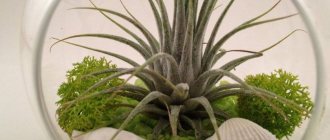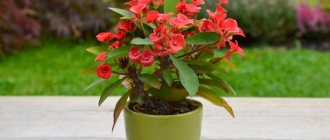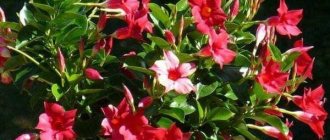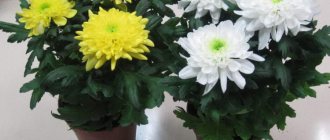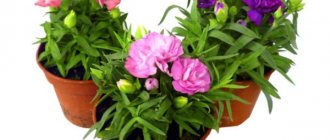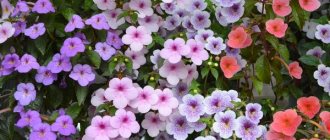What does Far Eastern Schisandra look like, what family does it belong to:
The plant is a deciduous vine that reaches a length of 15 m and has a trunk with a diameter of 2.5 cm. The culture belongs to the Limonnikov family. It is often called Chinese lemongrass. The shoots and leaves of the flower have a pronounced lemon aroma. That is why the culture got its name.
Schisandra has a number of beneficial properties
Common varieties
When growing lemongrass at home, the following varieties are usually chosen for this:
- Firstborn. This variety is characterized by high resistance to frost, fungi and parasites. The plant has cylindrical fruits that reach 7 mm in diameter. The juicy pulp has a sour taste. When pressing on the fruit, juice is released.
- Garden 1. This is a fast-growing vine that can produce a large harvest. Its fruits have a distinct aroma.
Important! When growing lemongrass indoors, you need to systematically prune. This will help prevent the crop from growing too large.
Medicinal properties and history of use
The roots and stems of lemongrass contain many valuable components that bring great health benefits.
Since ancient times, people have known that the plant gives the body strength and helps cope with fatigue. In China, lemongrass has been used for medicinal purposes for about 2000 years. In the Khabarovsk Territory, the juice of the crop has been produced for human consumption since 1967.
The plant has healing properties and helps achieve the following effects:
- reduce blood sugar parameters;
- cope with high cholesterol;
- improve the condition of cancer;
- dilate peripheral vessels.
The use of home remedies must be combined with medications. You should definitely consult your doctor first.
Important! Traditional recipes have many contraindications and can cause harm.
Features of caring for Far Eastern lemongrass at home
Far Eastern lemongrass - cultivation and care
Growing and caring for Far Eastern lemongrass has certain features. When planting a plant on a site, you must make a frame. To do this, you need to install poles 2-2.5 m high. You should stretch a wire through them. As necessary, bushes need to be tied to them.
Temperature
The seedling needs a sunny and warm place. This crop is not recommended to be grown in the shade. Do not expose it to strong drafts or dry wind. The plant develops best at a temperature of +22…+25 degrees. At the same time, the crop is considered quite resistant to frost.
In winter, it can withstand temperatures down to -40 degrees
Lighting
The plant requires good lighting. Thanks to this, the foliage will retain a rich green color, and the fruit clusters will retain long stalks. In order to develop normally and look attractive, lemongrass must be exposed to the sun for at least 8 hours.
Important! If sufficient light levels are not provided, the plant's foliage will turn yellow and the fruit clusters will shrink in size.
Watering
In its natural environment, lemongrass grows in conditions of moderate humidity. Therefore, the bushes need to be watered on time. In dry weather, 6 liters of water should be used per bush. The top soil must be mulched.
Spraying
In dry weather, the foliage of the plant should definitely be sprayed, since it dries faster than the roots.
Humidity
High humidity causes harm to the plant. You need to water the soil after it has completely dried out. If the groundwater level is high, lemongrass should be planted on a hill.
Priming
To grow lemongrass, it needs to be periodically hilled. To do this, you need to add a little soil around the stem without touching the roots. It is also useful to use mulch, which will help retain moisture after the soil has been moistened.
Feeding
The plant must be fed with ammonium or potassium nitrate. The bush can also be fertilized with organic matter - manure or bird droppings.
Note! After the harvest is completed, ash can be added.
The culture is also fed with ammonium nitrate
Planting a plant
Lianas act as decoration on the site; their place must be carefully selected. It is necessary to provide Schisandra with space for development and sufficient height of support.
Site selection and soil requirements
The ideal place for lemongrass is the south side of a fence or gazebo. It is better not to let vines along the walls of the house; they can get into the gutters and damage the roof.
In nature, the plant grows in forests on sandy and loamy soils. Despite their wild habitat, vines grow only in fertile soil with drainage elements. Schisandra needs light and loose soil, with the addition of organic and mineral fertilizers.
In the soil for growing lemongrass, there should be drainage from small stones or slate at a depth of 30–40 centimeters.
How and when to plant?
Schisandra is planted when the air temperature rises above 10–15 degrees - in April or May. In regions with hot climates, autumn planting is preferable - in October.
Holes for plants are dug at a distance of one meter from each other. A bed for lemongrass is prepared to a depth of 40 cm and a width of 60 cm. Special soil is poured into this hole, and then the sprout is planted. A fence of vines will turn out more beautiful if many seedlings are planted in a row.
When and how does it bloom
Anemones - growing and care in open ground
Far Eastern lemongrass blooms at 5-6 years of age. The buds bloom in May-June. The flowering process lasts 1.5-2 weeks. It is characterized by certain features.
Types of flowers
The culture is characterized by white buds. Before they begin to fall, they acquire a delicate light cream color.
Flower shapes
Schisandra flowers resemble magnolia in shape and appearance. In this case, the buds form inflorescences. Each of them contains 3-5 flowers.
Flowering period
The flowering period begins in May-June. It lasts for 1.5-2 weeks. The flowers grow on long stalks and bend slightly towards the ground.
The plant has white-cream-pinkish flowers
Transfer
The first can be done after purchasing a young seedling in a pot, but first it must be quarantined for a week away from other plants. During this time, you will make sure that the lemon is healthy and not infected with spider mites. When deciding whether a transplant is needed, inspect the soil to see if the roots are visible, if they are sticking out of the drainage hole, if the pot is visually small. If the issue of replanting is resolved positively, wet the soil, tilt the pot and, holding it by the stem, very carefully pull out the plant with a lump of earth. Inspect the lump - the roots should not stick out from it. If it smells rotten, carefully loosen the root system above the basin. You can put it in warm water and clean it from the earth.
Examine the roots, remove bad, blackened, rotten ones. Pour drainage into a slightly larger pot, then fill the soil mixture up to half, place the plant upright, spread out the roots and fill with soil, not reaching a couple of centimeters to the top. Water and place in partial shade without drafts, let the plant come to its senses and get used to the new place.
For the first 2-3 weeks after transplantation, keep it under a plastic bag with “ventilation” and gradually accustom it to air. If you place a seedling without covering it, it may die. Keep it away from sunlight to avoid sunburn. After the plant has become a little stronger and accustomed to the air, remove the plastic cover. Watering can already be combined with fertilizing.
During the first three years, the lemon is replanted annually. The size of the next pot should be 2-3 cm larger in diameter and depth compared to the previous one. Then the tree should be transplanted into a container of larger diameter once every five years.
How does Far Eastern Schisandra reproduce?
The plant can be propagated in different ways. In this case, you must follow the instructions of specialists.
Germination of seeds
It is recommended to plant lemongrass seeds in spring or autumn. They are first immersed in cold and wet sand for 1 month. When planting, the seeds must be deepened into the soil by 2 cm. The distance between the bushes should be at least 15 cm. The seeds are sprinkled with peat or humus on top.
Rooting cuttings
When propagating Schisandra by cuttings, in mid-June you need to cut off young shoots that contain at least 4 buds. They need to be deepened into the damp soil by 4 cm. Then the sprouts should be watered and covered with film.
Note! The bushes need to be ventilated every day. In spring, seedlings are moved to open ground.
Other options
Schisandra can also be propagated using the following methods:
- By shoots. To do this, you need to take one of the stems of the plant, separate it from the roots and then plant it in a new place.
- By layering. In this case, you need to choose a strong shoot and bend it to the ground. Next you need to cover it with soil and systematically water the shoot. After some time it will sprout roots. At this stage, the shoot needs to be separated from the main plant and planted in a new place.
How to feed lemon?
Lemon can bloom and bear fruit in the 2-3rd year. Caring for indoor lemon is:
- timely watering;
- regular spraying;
- competent feeding.
Once a month, after watering, add a dose of nitrogen fertilizer dissolved in water (urea or ammonium nitrate - 2 g per 1 liter of water) into the soil. This is especially true for soil poor in organic matter. Nitrogen gives strength to plants; during spring and summer, a powerful leaf apparatus is formed, with which the tree safely endures all the hardships of winter. You can water with diluted slurry of low concentration (1:30).
Under no circumstances should you fertilize with microelements. Unlike other plants, lemons do not have hairs on their roots. Their role is played by mycorrhizal fungi. They seem to stick to the roots of the lemon, and through them the whole plant is fed. Mycorrhizae themselves feed on organic matter, for example, humus. They decompose it, forming valuable substances, which they first feed on themselves, and then feed the lemon. Trace elements kill mycorrhiza, thus the tree is depleted and will soon die. Excessive nitrogen feeding is not good for lemons. The tree can grow with a powerful crown to the detriment of fruiting.
Starting from the second year, in addition to nitrogen, phosphorus and potassium must be used. Superphosphate can be sprinkled on top of the soil and it will slowly but surely feed the plant. Phosphorus promotes abundant flowering and fruiting. The flowering period of the lemon tree is spring, autumn. Single buds appear throughout the year. Fruiting period: after flowering, a fruit is formed that will grow and gain strength for 9 months. This can happen at any time. After harvesting in the spring, it is necessary to feed with urea (or saltpeter) and superphosphate. If the crop is harvested in the fall, you cannot feed it, since the plant goes dormant and excess nutrition will only weaken it. Postpone fertilizing to February.
Details about medicinal properties, instructions for use
All plant fragments have healing properties. They should be stored in paper bags or glass containers.
Roots
Schisandra root should be collected in spring or autumn. Dried raw materials must be crushed. It contains a lot of essential oils, so it can be used to treat varicose veins, lice, and hypotension. Root-based products are used to treat caries and inflammation in the oral cavity.
The roots of the plant have healing properties
Vine
Schisandra vines should be harvested in August. During this period, it contains a maximum of phytoncides. To preserve raw materials for a long time, they need to be dried under a canopy.
Fruit
Also, a healing tincture can be made from the fruits of the plant. To do this, 20 g of fruit must be mixed with 100 ml of alcohol. Insist the composition for 10 days. Then the berries should be squeezed out, and the product should be strained through cheesecloth and left for another 2 days.
To treat pathologies of the nervous system and improve the functioning of the immune system, you can make an infusion. To do this, 10 g of fruits need to be brewed in a glass of boiling water. The product should be drunk 2-3 times a day, 1 tablespoon. This is done half an hour before meals.
Stems
The stems of the plant are harvested during fruiting. You can also collect the bark of the plant. This is best done in the spring. It is worth making medicinal tea from young stems and bark. To do this, you need to take 1 liter of boiling water for 10 g of raw materials. The composition helps cope with colds.
Far Eastern lemongrass is a beautiful and useful plant that is grown by many gardeners. To achieve success in this, you need to properly care for the crop. At the same time, it is necessary to maintain optimal humidity parameters, trim and feed the crop in a timely manner.

